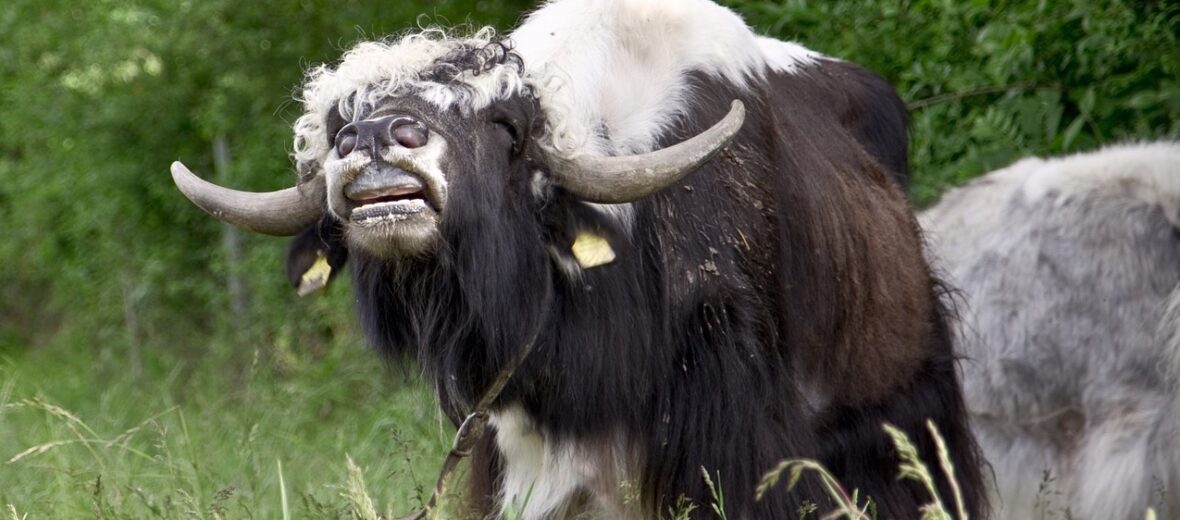
The yak is a close relative of the water buffalo and the American bison. These lumbering beasts inhabit the alpine meadows and steppes of the Tibetan Plateau in the Himalayas. They can be found at altitudes of up to 20,000 feet! Yaks are the only wild and domestic mammal to live at these altitudes. There are 2 separate species of yak: the domestic (Bos grunniens) and the wild (Bos mutus). This article talks about both, in general. Yaks are descendants of aurochs, an extinct species of giant cattle. Wild yaks are listed as Vulnerable by the IUCN, due to habitat loss and over hunting. Also, ironically, wild yaks are classified as Vulnerable due to the over-grazing of domestic yak, as well as other grazing animals.
First the Stats…
Scientific name: Bos grunniens (domestic) and Bos mutus (wild)
Weight: Up to 2,200 lbs.
Length: Up to 11 feet, plus a 3 foot tail
Height: Up to 6.5 feet
Lifespan: Up to 20 years
Now on to the Facts!
1.) Yaks graze on grass, moss, flowers, lichens, and tubers. This makes them a keystone species as their droppings help to fertilize plant growth and disperse seeds.
2.) Their fur, fatty milk, meat, and dung are highly valued.
3.) Due to their long, thick fur wild yaks are able to withstand temperature drops of up to -72°F!
4.) Herds can be up to 100 individuals strong.
5.) Qiang people, who lived along the Tibetan Plateau borderlands, near Qinghai Lake are documented as being responsible for the domestication of the wild yak. They domesticated the yak back around 221 B.C.
But wait, there’s more on the yak!
6.) Yak milk contains more amino acids, calcium, and vitamin A than cow’s milk.
7.) The male’s horns can reach up to 40 inches long! Females also have horns, but they are about half the size of a male’s.
Did you know…?
Their long, shaggy tails are often used for the production of fake beards in several Chinese theaters.
8.) During the winter months, they will use their horns to shovel away snow in order to look for plants on which to graze.
9.) Mating season takes place in early September.
10.) Females birth 1 calf, after a 9 month gestation (pregnancy). They breed every 2 years.
But wait, there’s still more on the yak!
11.) Yaks aren’t just for Asia anymore. Yak ranching has grown in popularity in the United States. There are approximately 5,000 registered yaks in North America.
Did you know…?
Yaks are capable of running up to 25 mph and can also swim!
12.) Domestic yaks eat about a third less than cattle and their smaller hooves trample the ground less, causing less environmental damage. They are also surprisingly disease resistant and are more docile than other bovines.
13.) Their undercoat is called down. It is among the silkiest, warmest, and softest natural fibers. It is just as soft as cashmere and is more sustainable. Raising Mongolian goats for cashmere causes overgrazing and other environmental damage.
14.) Yak milk is often found in dog treats that promote healthy eating.
15.) Snow leopards prey on yaks.
Now a Short Yak Video!
Also, check out the Critter Science YouTube channel. Videos added frequently!
Want to suggest a critter for me to write about? Let me know here.



